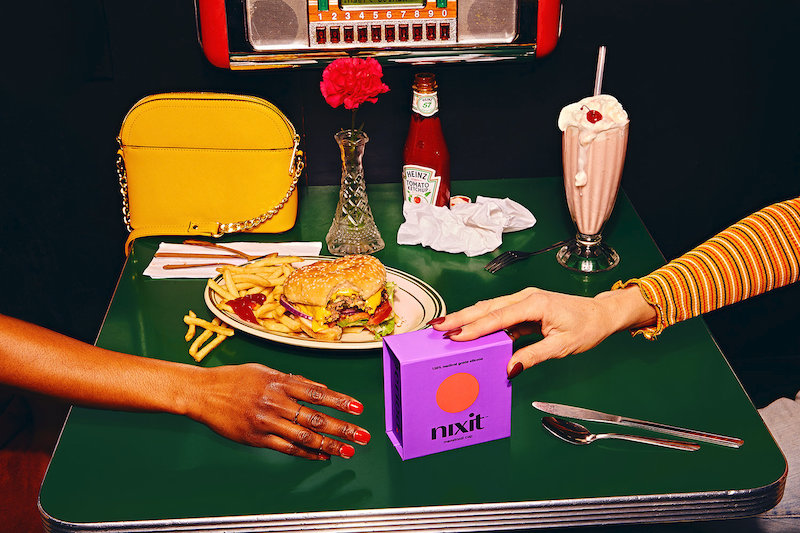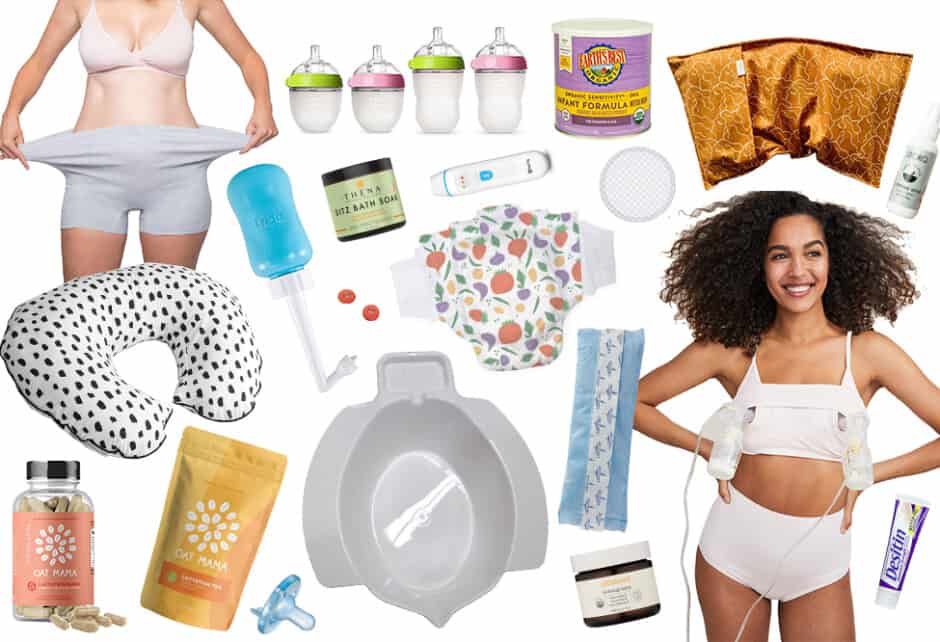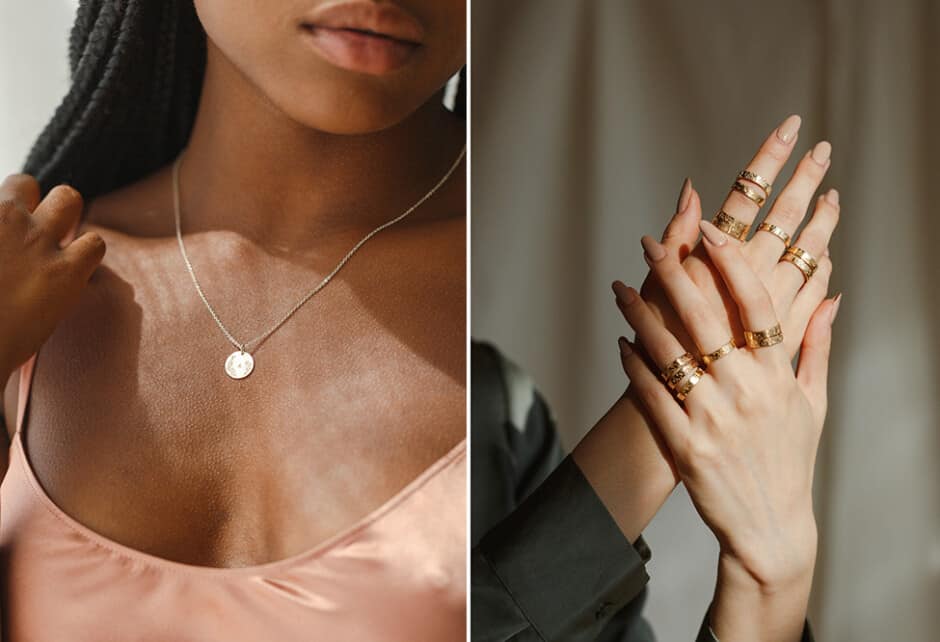
We Test Drove All The New Period Products—From Menstrual Discs To Leak-Proof Panties
Written by Zoila Darton
Photography by Photograph by Aubrie Pick for Nixit
We’ve come a long way from “pads with wings.” Today’s modern woman has a plethora of period tech to choose from. The Always vs. Tampax debate is yesterday’s news. Today, it’s all about the cup, the period panties, and the pharmaceutical options—and it seems like this market is only growing.
Why the flood of new products now? Are tampons and pads really not cutting it? Just as the realizations about what icky substances make up our skincare and makeup products has led to something of a clean beauty revolution, turns out there are actually a lot of reasons we should be rethinking the things we’re putting into our bodies every month. First of all: We’re putting these things INTO our bodies. We don’t know what kind of sorcery was used to allude us from investigating or even caring about what feminine products are made of but, yikes, were we asleep at the wheel! We guess we just assumed that companies wouldn’t use materials with toxins. What a wild concept! Well, sadly, your average household tampons or pads are most likely made with bleach and other outrageous ingredients that have no business inside or near your vaginas.
In March of 2018, Women’s Voices for the Earth, an organization committed to amplifying women’s voices to eliminate the toxic chemicals that harm women’s health and communities, commissioned a STAT Analysis to analyze volatile and semi-volatile organic compounds in a variety of different tampons purchased in New York stores, including organic, mainstream, and dollar-store brands. The analysis detected carbon disulfide, a known reproductive toxin, in all four brands of tampons that contain rayon. Carbon disulfide is a chemical that is predominantly used in the manufacture of rayon; it was not detected in the all-cotton tampons that were tested.
Additionally, some brands of tampons contained other volatile organic compounds including reproductive toxins, toluene and xylene, as well as carcinogen, methylene chloride. (Methylene chloride, commonly found in paint strippers, has made headlines recently for its link to over 50 deaths since 1980). None of these chemicals are disclosed by the manufacturers. Instead, where disclosure exists, only the basic components of tampons are listed, often using vague language such as “may contain” and “rayon and/or cotton”
There have been various articles insisting that this “isn’t a big deal,” and the FDA itself has stated that there’s nothing to be worried about. Still, many women are deferring to their personal judgement commiting to a hard NO on brands that aren’t committed to clean feminine products. Lucky for us (if you’re feeling as uneasy as we are) there are a ton of new, non-toxic options to choose from. They generate less waste, and for many, are way more convenient and pleasant to use that the old standbys.
But we know change us hard, especially when you’ve been doing the same thing every 30-days or so, for decades. So, we asked real women about their experiences using the new crop of period tech alternatives. Read on for all the answers you need.
Product
The Menstrual Cup
Overview
These are silicon vessels shaped like a funnel. The cup slips up and into your vaginal cavity and creates a light suction with your cervix. Then they stay put, collecting menstrual blood for up to 12 hours. Yes, they really work! We had heard of these cups for years, but were apprehensive about trying one. Now we feel silly for not switching over sooner, because these menstrual cups are a game changer. A little challenging to get used to at first, but by day three you’ll be a pro. We love these reusable menstrual cups because not only are you ridding your body of toxins, but they save money and precious bathroom space. The down side: The cup takes some getting used to getting it in and out. And it can be messy, especially in a public restroom with no private sink to rinse in between uses. In that case just pop it out, dump it, and pop it back in, in one fell swoop. Then do your best with some TP or a baby wipe if you have one handy. If you try it, give it a few months before you give up!
Are all Cups Created Equal?
Nope. We tried a few. Plus there are discs. More on that later.
The Diva Cup, $22.99, Amazon.
This brand is the OG—a sturdy, single silicon cup that can be reused for years—but we found the size recommend for our age range a bit large and cumbersome and could feel it all day. But others we spoke to are converts. Erin said, “I had gotten the Diva at an event ages ago, and while I wanted to try it, I was just on autopilot using tampons, and figuring out something new seemed like a big to-do. It took getting my period with no tampons in the house to go for it. The first time was a little intimidating, and super intimate—you really have to get your fingers up there to get it in place. There was a very detailed (and humorous) string of text messages between my bestie and I (she’s been a long-time user) regarding my confusion. But after a few days of practice, I was hooked! Even on my heaviest days, I only had to dump it every 6-8 hours, and on normal days it was more like 12 hours. Plus, no more bloody tampons filling my bathroom trash, or feeling self conscious being naked when on my period (no strings!). This may have just been a coincidence, but after a few months of use, my periods lightened up and my cramps pretty much disappeared all together. It just makes my period feel so much more like a non-event.”
The Cora Cup, $29.99, Amazon.
Another infinitely reusable silicon option, this one felt seamless and natural right away. We are also really into how beautiful the Cora packaging is. Feminine hygiene has never been so chic! Both cups come with detailed instructions on how to use them and their own little carrying case, which definitely comes in handy.
Nixit, $49, Nixit.
So, as we mentioned earlier, there are menstrual cups and there are menstrual discs. There’s are a few things that set them apart, such as where they sit once you insert them, and the fact that you can have comfortable, mess-free sex while a disc is inserted (not true for a cup). For a dissertation on the cup vs. disc differences, this article is incredibly informative. The Nixit is a disc, and just like the cups, it creates a seal with the vaginal wall, is reusable, is made of 100% medical grade silicone, and can be worn safely for up to 12 hours. While the sex aspect is a definite plus, these can be a bit harder to remove, and present greater risk for messes and spills during removal. The Nixit comes in one size and is listed to have a 70 ml capacity.
Flex, $39.99, Amazon.
The Flex offers the best of both worlds. One package contains a reusable silicon cup, with a few smart tweaks to the classic design—there is a string-inspired silicon loop at the end that makes for easier removal—as well as two disposal discs, for those nights when you don’t want your period to cramp your sex game. A big benefit for first-time users is you get the variety pack and can start with what feels most comfortable. Sarah gave the Flex a try and had this to say: “I ordered the Flex cup and when I took it out of the packaging I gawked at the sheer size of the cup. I truly could not understand how this toilet plunger was going to fit in my vagina. In the box were two flex discs, so I tried one of those first. I thought it was pretty smooth and couldn’t feel it at all.”
Product
Knix Leakproof Period Panties, $23–$28, Knix.
Overview
Period panties. Yep, we were skeptical, too, because these magic undergarments promise no-leak protection—a.k.a. free bleeding right into your underwear! Period panties are said to hold up to 2.5 tampons worth of absorbency depending on your flow. If you’re feeling as skeptical as were, here’s a real life panty prophecy from Lindsay. “Two years ago, I made the big switch from tampons to a cup. I felt liberated, not having to worry about it for twelve solid hours. Then something happened, I began to feel rage every month at just the thought of inserting what felt like a silicone suction cup in my vagina. All I wanted to do was free bleed. I immediately jumped online and purchased three different styles of period panties from Knix—brief, boy shorts, and workout shorts. I learned what liberation really felt like on another level. For me personally, it’s not the same as using pads or liners, something else I felt rage for, bunching up and getting all in my crevices. This feels natural. It’s been 6 months and I don’t see myself going back to the cup. I’m an entrepreneur and work from home, so I must admit it’s manageable for me. I switch them out when it’s time, hand wash and hang to dry.” But these panties aren’t cheap, considering you need to wear multiples in one day, and it’s a challenge to stash or clean them while on the go.
Product
The No-Period Implant.
Overview
There are a ton of birth control shots and pills out there that are promising no periods and, of course, act as a contraceptive. Admittedly, the idea of not getting a period at all made us a bit uneasy, but recent research points to the fact that the modern women gets waaaaaay more periods than women did in the past (thanks to bearing fewer children and living way longer) and that there is really no harm in skipping them for a while. But every woman’s body reacts differently to synthetic hormones, and their are countless frightening reviews on the internet, from acne to weight gain to suicidal thoughts to non-stop bleeding. The makers of Nexplanon, one popular implant option, don’t refute the info. There own website states that in studies, one out of ten women stopped using the implant because of an unfavorable change in their bleeding pattern, and other common side effects can include headaches, vaginitis (inflammation of the vagina), weight gain, acne, breast pain, viral infection such as sore throats or flu-like symptoms, stomach pain, painful periods, mood swings, nervousness, depressed mood, back pain, nausea, dizziness, pain and pain at the site of insertion. Yikes! Here we have Liz and Grace recount their experiences with Nexplanon.
Nexplanon Birth Control Inplant, by prescription only, Nexplanon.
Liz: “I was really excited to try this. The implant can last up to four years. I felt like it was great for someone on the go because I was always forgetting to take my pill. At first everything was cool—I didn’t get my period for the first month. But then, my period lasted for 3 months straight! I decided to remove it because I couldn’t go another day with having my period. So much for that.”
Grace: “The insertion was completely pain free (apart from the pin prick of anesthetic). I felt a slight tugging when they are putting it in, but no pain. My arm ached for the next few days, and I wasn’t able to do any heavy lifting with it, and there was some bruising and tenderness but nothing serious. I experienced some irregular bleeding for the first three-ish months, but it seemed to sort itself out and went from a light monthly period to 100% period-free for two years.”
So, the verdict here? There’s something for everyone and the good news is: no matter what, you can find something that’s safe and tailored to your needs. It just may take some trial and error.
Share this story




